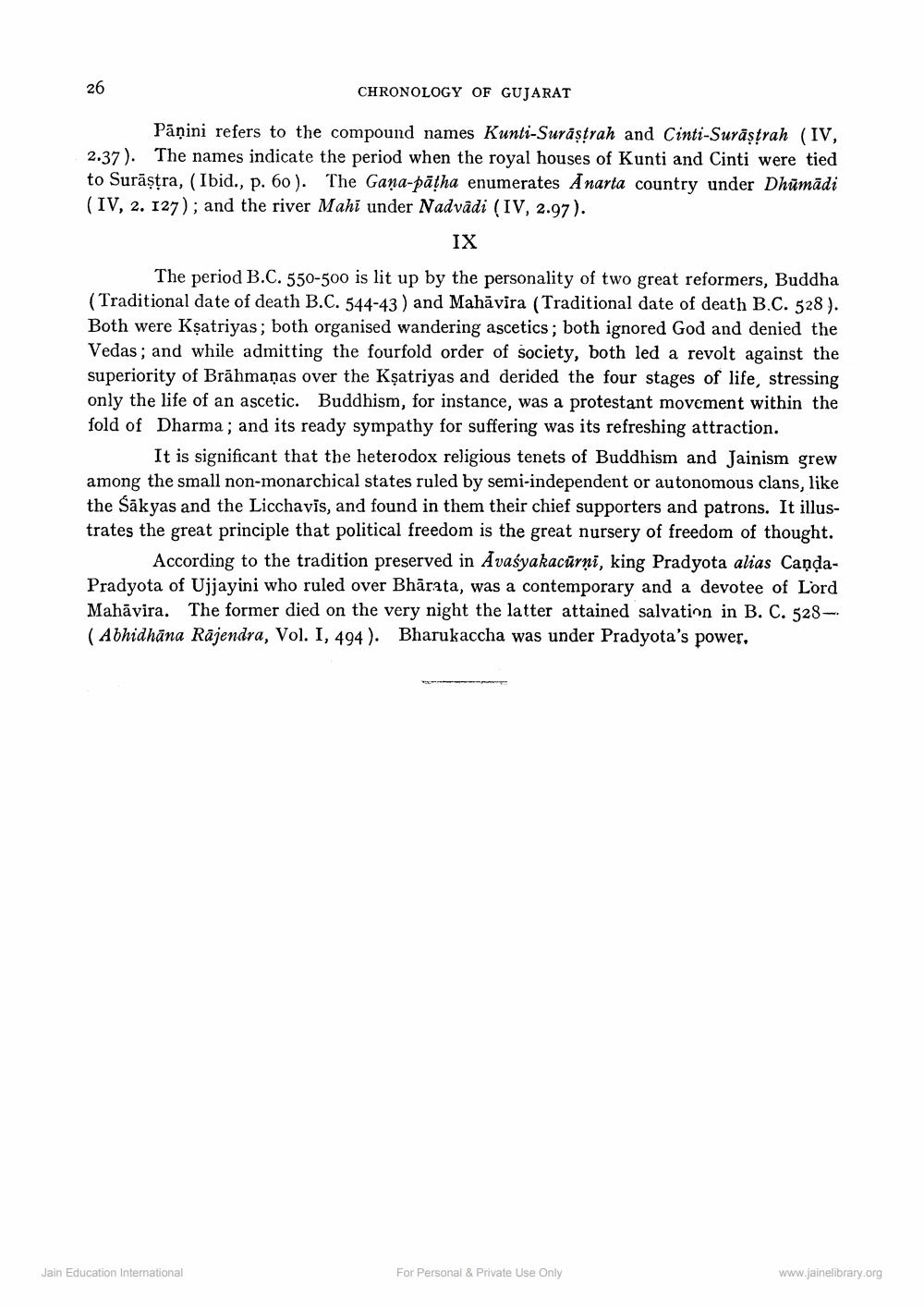________________
26
CHRONOLOGY OF GUJARAT
Pāṇini refers to the compound names Kunti-Surástrah and Cinti-Surāşțrah (IV, 2.37). The names indicate the period when the royal houses of Kunti and Cinti were tied to Surāșțra, (Ibid., p. 60). The Gana-pāțha enumerates Anarta country under Dhūmādi (IV, 2. 127); and the river Mahi under Nadvādi (IV, 2.97).
IX
The period B.C. 550-500 is lit up by the personality of two great reformers, Buddha (Traditional date of death B.C. 544-43 ) and Mahāvira (Traditional date of death B.C. 528 ). Both were Kşatriyas; both organised wandering ascetics; both ignored God and denied the Vedas; and while admitting the fourfold order of society, both led a revolt against the superiority of Brāhmaṇas over the Ksatriyas and derided the four stages of life, stressing only the life of an ascetic. Buddhism, for instance, was a protestant movement within the fold of Dharma; and its ready sympathy for suffering was its refreshing attraction.
It is significant that the heterodox religious tenets of Buddhism and Jainism grew among the small non-monarchical states ruled by semi-independent or autonomous clans, like the Sākyas and the Licchavis, and found in them their chief supporters and patrons. It illustrates the great principle that political freedom is the great nursery of freedom of thought.
According to the tradition preserved in Avaśyakacūrni, king Pradyota alias CandaPradyota of Ujjayini who ruled over Bhārata, was a contemporary and a devotee of Lord Mahāvira. The former died on the very night the latter attained salvation in B. C. 528(Abhidhāna Rājendra, Vol. I, 494). Bharukaccha was under Pradyota's power,
Jain Education Interational
For Personal & Private Use Only
www.jainelibrary.org




